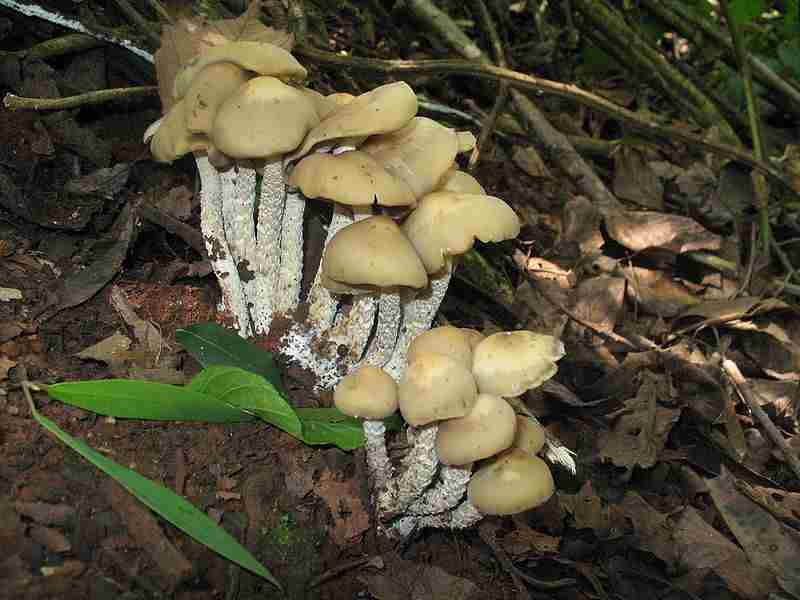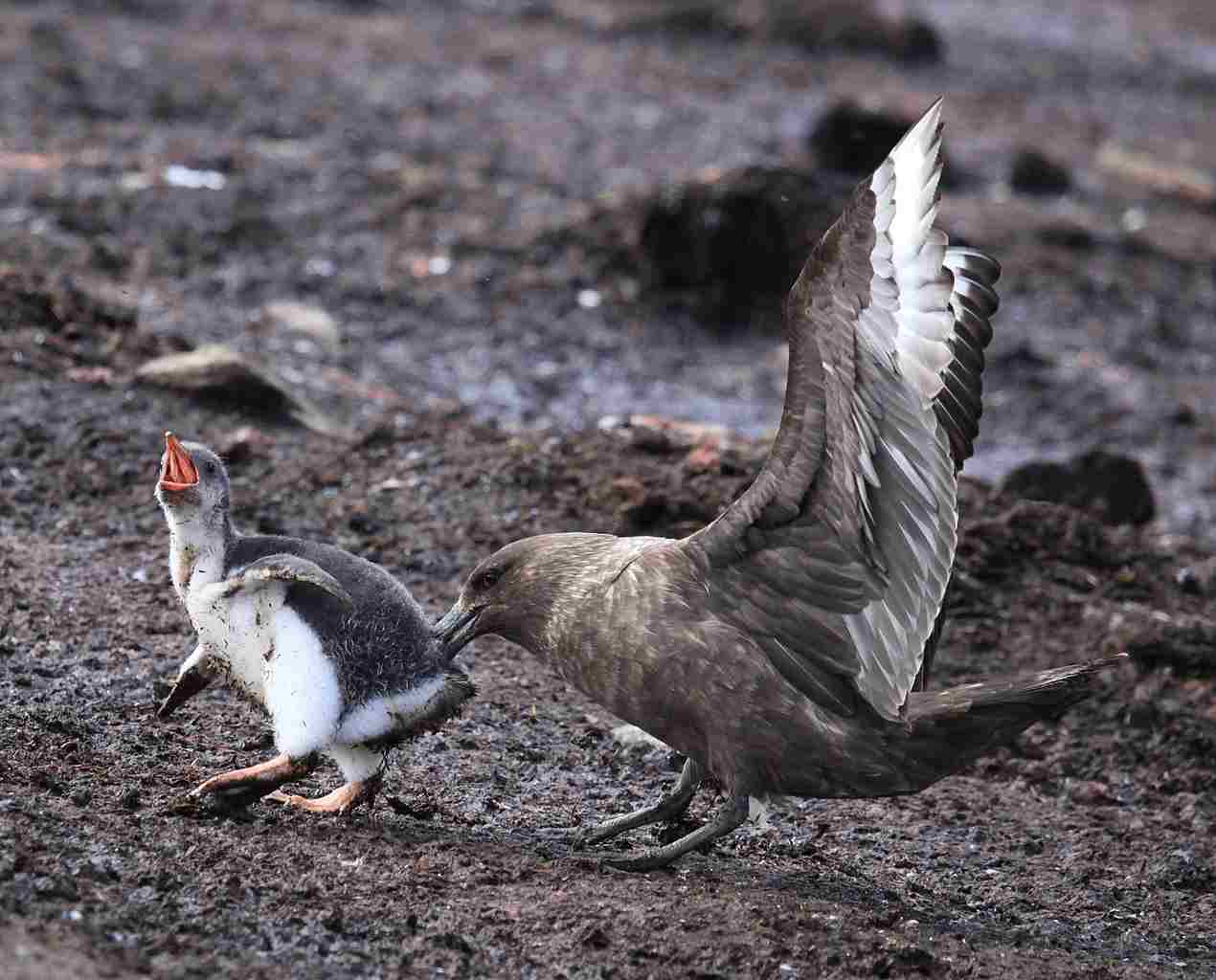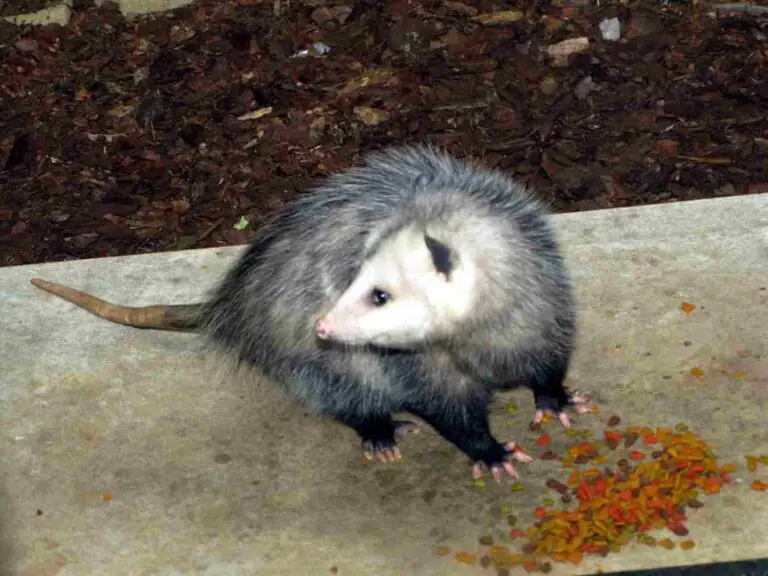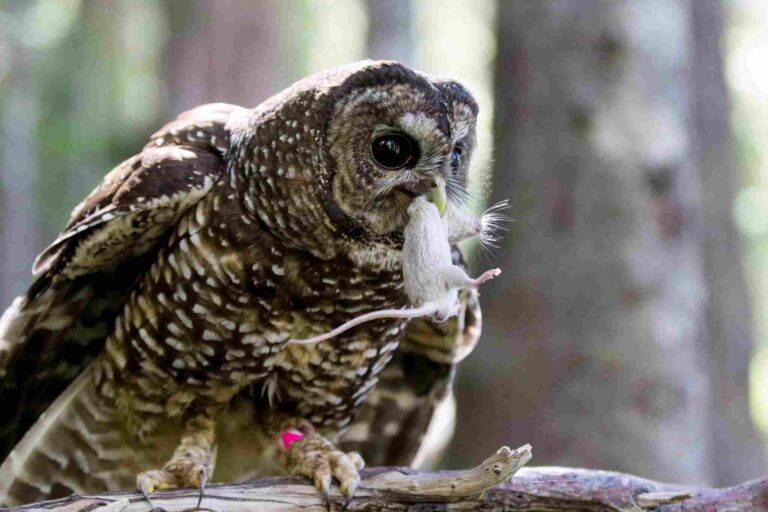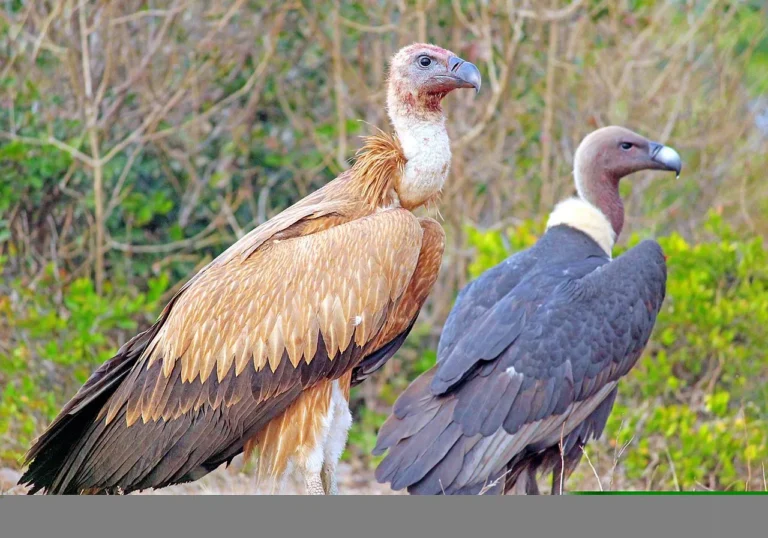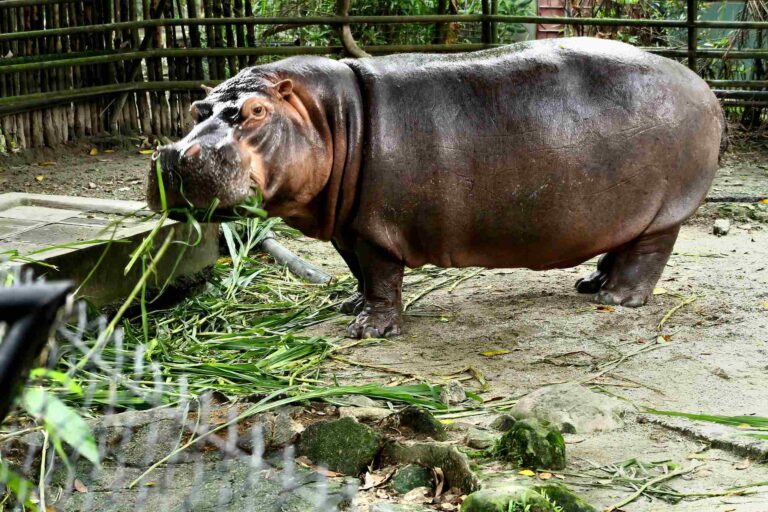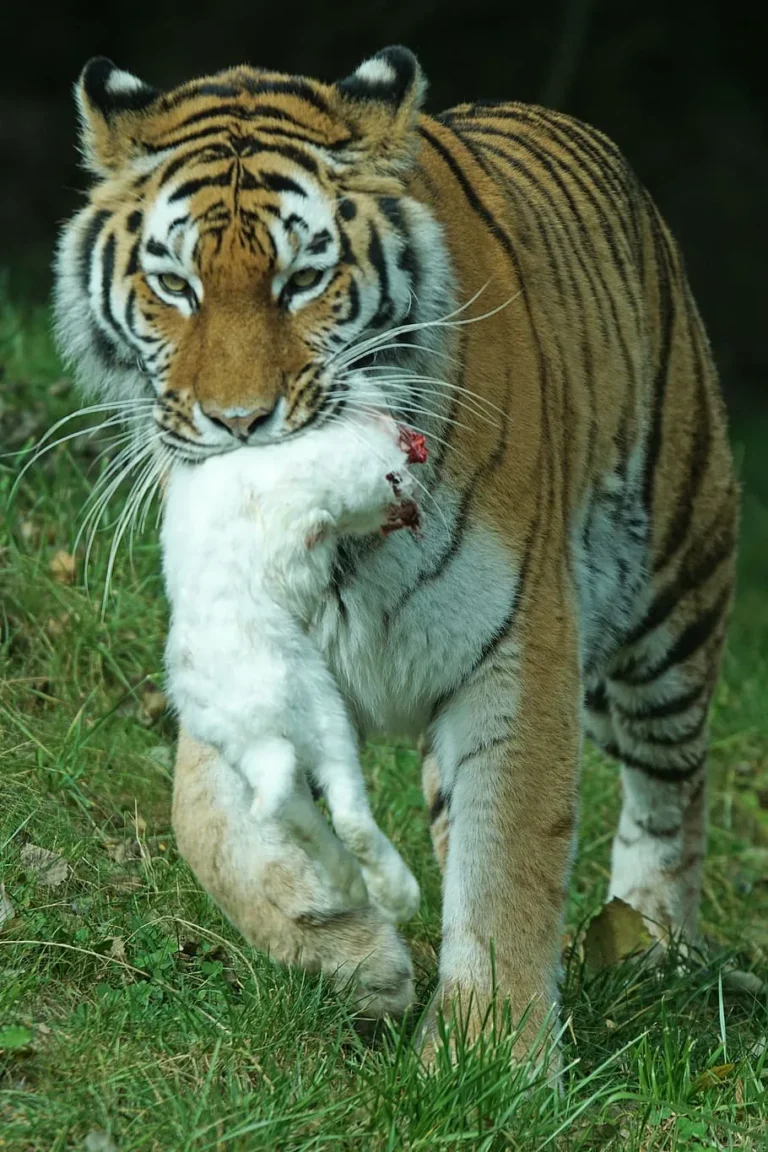Is a Bear a Consumer? An Exploration of Bear Feeding Behavior
A bear is a consumer because it relies on other organisms to serve as its sources of energy and nutrition, and is incapable of manufacturing its own food.
In this article, the consumer role and position of bears is discussed with several related questions answered.
Are Bears Producers or Consumers?
Bears are not producers, but are rather consumers because they do not have the features or capability for manufacturing their own food or biomass from inorganic resources like solar energy, carbon dioxide and water.
Reasons Why Bears are Not Producers
1. Bears Have No Chlorophyll Pigmentation
Bears have no chlorophyll pigmentation, which is a key reason why they are not considered producers in the ecosystem. Chlorophyll is the pigment responsible for capturing sunlight and converting it into energy through photosynthesis. This process allows plants and other producers to synthesize organic molecules, such as glucose, which serve as their source of energy. However, bears lack the ability to produce chlorophyll, making them unable to generate their own energy through photosynthesis.
Without the ability to produce their own energy, bears must rely on other organisms or food materials to survive. They are classified as consumers because they obtain their energy by consuming other living organisms or feeding on organic matter. Bears are omnivores, meaning they have a diverse diet that includes both plant and animal matter. They consume a variety of foods, such as berries, nuts, fish, insects, and even larger mammals like deer.
Unlike producers, bears do not possess typical producer features like roots and leaves. These structures are essential for plants to absorb water and nutrients from the soil and to capture sunlight for photosynthesis. Bears, on the other hand, have adaptations suited for their omnivorous diet, such as sharp teeth and strong jaws for tearing and chewing food.
2. They Cannot Synthesize Organic Molecules like Producers
Bears cannot synthesize organic molecules like producers, which is another reason why they are not considered producers in the ecosystem. Producers, such as plants, algae, and some bacteria, have the ability to convert sunlight into energy through photosynthesis. This process allows them to synthesize organic molecules, such as glucose, which serve as their source of energy.
Unlike producers, bears lack the necessary cellular structures and biochemical pathways to carry out photosynthesis. They do not possess chloroplasts, the organelles responsible for capturing sunlight and converting it into energy. Without the ability to produce their own energy, bears must rely on consuming other organisms or food materials to survive.
Bears are classified as consumers because they obtain their energy by consuming other living organisms or feeding on organic matter. As omnivores, bears have a diverse diet that includes both plant and animal matter. They consume a variety of foods, such as berries, nuts, fish, insects, and even larger mammals like deer.
While producers have specialized structures like roots and leaves to absorb water and nutrients from the soil and capture sunlight for photosynthesis, bears do not possess these typical producer features. Instead, they have adaptations suited for their omnivorous diet. Bears have sharp teeth and strong jaws for tearing and chewing food, allowing them to consume a wide range of plant and animal materials.
In addition to their inability to synthesize organic molecules, bears also lack the necessary enzymes and metabolic pathways to break down cellulose, a complex carbohydrate found in plant cell walls. This further supports their classification as consumers rather than producers. Bears rely on the digestive enzymes produced by their own bodies, as well as the microbial communities in their digestive systems, to break down the food they consume and extract the necessary nutrients.
3. Bears Must Consume Other Organisms or Food Materials to Survive
Bears must consume other organisms or food materials to survive, which is a fundamental reason why they are not considered producers in the ecosystem. Unlike plants, algae, and some bacteria, bears lack the ability to synthesize organic molecules through photosynthesis. This process, carried out by producers, allows them to convert sunlight into energy and produce their own food.
Without the ability to produce their own energy, bears rely on consuming other living organisms or feeding on organic matter to meet their nutritional needs. As omnivores, bears have a diverse diet that includes both plant and animal matter. They consume a variety of foods, such as berries, nuts, fish, insects, and even larger mammals like deer.
Bears are classified as consumers because they obtain their energy by consuming other living organisms. They play a crucial role in the food chain as top predators, regulating the populations of their prey species. By consuming other organisms, bears contribute to the transfer of energy and nutrients within the ecosystem.
In order to survive, bears have developed various adaptations to obtain and consume their food. They have sharp teeth and strong jaws for tearing and chewing, allowing them to consume a wide range of plant and animal materials. Bears also have a keen sense of smell, which helps them locate food sources, especially during times of scarcity.
While producers have specialized structures like roots and leaves to absorb water and nutrients from the soil and capture sunlight for photosynthesis, bears do not possess these typical producer features. Instead, they have adaptations suited for their omnivorous diet. Bears have a digestive system that allows them to break down the food they consume and extract the necessary nutrients.
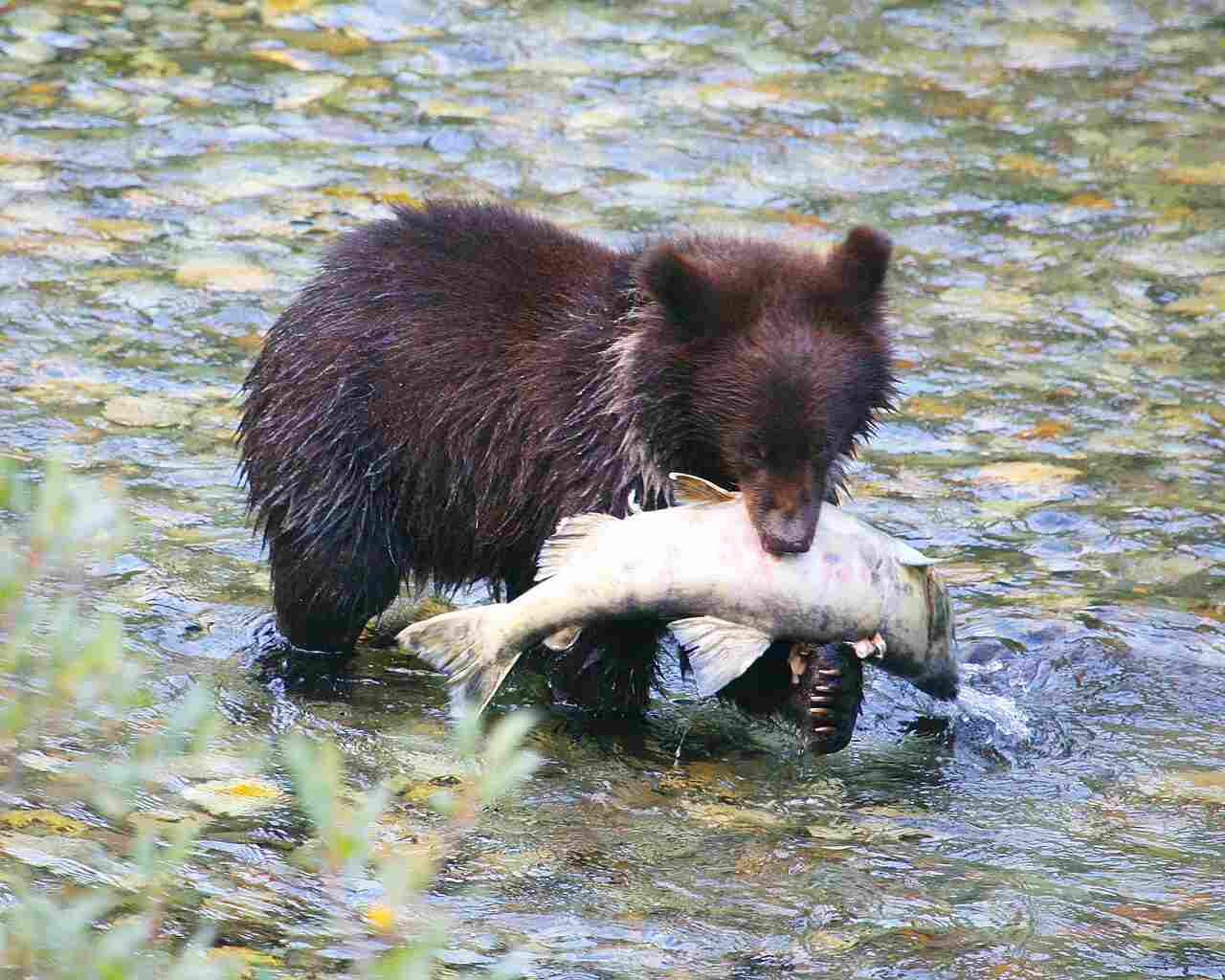
4. Typical Producer Features lie Roots and Leaves are Lacking in Bears
Bears are not considered producers in the ecosystem due to the absence of typical producer features like roots and leaves. Unlike plants, algae, and some bacteria, bears lack the specialized structures necessary for photosynthesis and nutrient absorption. This is one of the fundamental reasons why bears are classified as consumers rather than producers.
Without roots, bears are unable to absorb water and nutrients from the soil like plants do. Instead, they rely on consuming other organisms or food materials to meet their nutritional needs. Bears have adapted to their omnivorous diet by developing sharp teeth and strong jaws, allowing them to tear and chew a wide range of plant and animal matter.
In addition to lacking roots, bears also lack leaves, which are essential for capturing sunlight and carrying out photosynthesis. Photosynthesis is the process by which producers convert sunlight into energy and produce their own food. Bears, on the other hand, must obtain their energy by consuming other living organisms.
Bears play a crucial role in the food chain as top predators, regulating the populations of their prey species. By consuming other organisms, bears contribute to the transfer of energy and nutrients within the ecosystem. Their diverse diet includes berries, nuts, fish, insects, and even larger mammals like deer.
While bears may not possess typical producer features like roots and leaves, they have other adaptations suited for their omnivorous diet. Their digestive system allows them to break down the food they consume and extract the necessary nutrients. Bears also have a keen sense of smell, which helps them locate food sources, especially during times of scarcity.
What Type of Consumer is a Bear?
A bear is a high-level consumer, typically classified as a level 4 or 5 consumer, also known as a tertiary or quaternary consumer. This classification is based on the relatively large scale of their trophic and predatory impact within the ecosystem. However, it is often difficult to place bears within a distinct consumer level due to their opportunistic behavior and high adaptability in terms of diet.
Bears are omnivores, meaning they have the ability to consume both plant and animal materials. They have a wide-ranging diet that includes plant materials such as berries and nuts, as well as hunting prey, scavenging on carrion, and even consuming refined foods in urban environments. This versatility in their diet allows bears to adapt to different habitats and food availability.
The classification of bears as consumers is primarily based on their feeding behavior. As consumers, bears obtain their energy and nutrients by consuming other living organisms. They play a crucial role in the food chain as top predators, regulating the populations of their prey species. By consuming other organisms, bears contribute to the transfer of energy and nutrients within the ecosystem.
Bears have a unique feeding strategy that sets them apart from other consumers. They are known for their ability to forage and consume a wide variety of food sources. This opportunistic behavior allows them to take advantage of seasonal fluctuations in food availability. For example, during the summer months, bears may focus on consuming plant materials such as berries and nuts, while in the fall, they may shift their diet to include more animal matter, such as fish or larger mammals like deer.
In addition to their opportunistic feeding behavior, bears also have the ability to scavenge on carrion. This means that they can consume the remains of dead animals, further expanding their food options. This scavenging behavior not only provides bears with an additional food source but also contributes to the recycling of nutrients within the ecosystem.
Bears’ adaptability in terms of diet is also evident in their ability to consume refined foods in urban environments. As human populations expand and encroach on bear habitats, bears may come into contact with human food sources, such as garbage or crops. This can lead to bears becoming habituated to human food and potentially causing conflicts between bears and humans. However, it also highlights the bears’ ability to adapt and take advantage of available food sources.
Factors that Determine What Type of Consumer a Bear Is
The precise classification of a bear as a consumer depends on several factors, including its age, geographic location, species, and available food sources. These factors play a significant role in determining the specific consumer level of a bear within the ecosystem.
Age is an important factor in classifying bears as consumers. Young bears, particularly cubs, rely heavily on their mother’s milk for nourishment during their early stages of life. As they grow older, they gradually transition to solid foods and develop their hunting and foraging skills. The dietary preferences and feeding behavior of young bears may differ from adult bears, which can influence their classification as consumers.
Geographic location also plays a crucial role in determining the type of consumer a bear is. Bears inhabiting different regions may have access to varying food sources, which can impact their diet and feeding behavior. For example, bears living in coastal areas may have a diet that includes a significant amount of fish, while bears in forested regions may rely more on plant materials such as berries and nuts. The availability of specific food sources in a particular habitat can influence the consumer level of bears in that area.
The species of bear is another factor that influences their classification as consumers. Different bear species have distinct dietary preferences and feeding behaviors. For instance, polar bears primarily feed on seals and other marine mammals, while brown bears have a more varied diet that includes both plant and animal matter. The specific consumer level of a bear species is determined by its feeding habits and the trophic impact it has within its ecosystem.
Available food sources also play a significant role in determining the type of consumer a bear is. Bears are opportunistic feeders and will adapt their diet based on the availability of food. In areas where there is an abundance of plant materials, bears may primarily consume vegetation, making them primary consumers. However, in regions where alternative food sources are scarce, bears may resort to hunting and scavenging, which can classify them as secondary or even tertiary consumers. The availability of food sources directly influences the consumer level of bears in a given ecosystem.
Is a Bear a Primary Consumer?
While bears are generally high-level consumers, they can be classified as primary consumers in some ecosystems and food chains. This classification is applicable when the bear’s diet is predominantly composed of plant material, which occurs when alternative food sources are scarce. In such cases, bears may rely heavily on vegetation such as berries, nuts, and grasses for their sustenance. This localized phenomenon is more likely to occur in fragmented ecosystems where the availability of prey animals is limited.
However, it is important to note that in a broad ecological context, bears cannot serve as primary consumers. The role of primary consumers is typically filled by herbivores and some omnivores with a much smaller trophic footprint than bears. Herbivores, such as deer and rabbits, are specialized in consuming plant material and play a crucial role in transferring energy from producers (plants) to higher trophic levels. These herbivores have adaptations that allow them to efficiently extract nutrients from plant matter, such as specialized teeth and digestive systems.
In comparison, bears have a more varied diet that includes both plant and animal matter. While they do consume plant material, their diet also consists of a significant amount of animal protein, such as fish, insects, and small mammals. This omnivorous diet sets bears apart from primary consumers, as they have a wider range of food sources and are capable of obtaining energy from both plants and animals.
Furthermore, bears have a larger trophic footprint compared to typical primary consumers. Their size and energy requirements necessitate a higher intake of food, which often includes larger prey animals. This places them at a higher trophic level in the food chain, as they consume both primary consumers and secondary consumers. Bears are known to prey on herbivores like deer and elk, as well as feed on the carcasses of other animals, making them important contributors to nutrient cycling in ecosystems.
Are Bears Secondary Consumers?
As implied in earlier sections, bears can sometimes function as secondary consumers, by feeding primarily on primary consumers like herbivorous rodents. This in fact happens naturally in many ecoregions where such animals are the accessible prey. Bears, with their opportunistic feeding behavior, are known to prey on small mammals such as mice, voles, and ground squirrels. These herbivorous rodents serve as the primary consumers in the food chain, consuming plant material and transferring energy from producers to higher trophic levels. By preying on these primary consumers, bears can be considered secondary consumers in these specific ecosystems.
However, bears are not typical secondary consumers in a broad context, as this position is suitably occupied by smaller heterotrophs like foxes and coyotes. These smaller predators have a more specialized diet that consists primarily of other animals. They rely on hunting and capturing prey to obtain their energy, and their trophic level is higher than that of bears. Foxes and coyotes are known to feed on a variety of small mammals, birds, and even insects, making them more efficient secondary consumers in terms of energy transfer within the food chain.
In addition to their consumption of primary consumers, bears also have a diverse diet that includes plant material and scavenged carrion. This omnivorous behavior sets them apart from typical secondary consumers, as they have a wider range of food sources. Bears are known to feed on fruits, nuts, and vegetation, especially during certain seasons when these resources are abundant. This plant material provides them with essential nutrients and energy, further highlighting their role as opportunistic feeders.
Furthermore, bears have a larger trophic footprint compared to typical secondary consumers. Their size and energy requirements necessitate a higher intake of food, which often includes larger prey animals. While they may consume primary consumers like herbivorous rodents, they also have the ability to prey on larger animals such as deer and elk.
This places them at a higher trophic level in the food chain, as they consume both primary consumers and other secondary consumers. Bears are known to scavenge on the carcasses of other animals as well, making them important contributors to nutrient cycling in ecosystems.
Is a Bear a Decomposer?
While bears are known to scavenge on carrion and other organic waste, they cannot be classified as typical decomposers. Decomposers play a crucial role in ecosystems by breaking down dead organic matter and facilitating the process of biodegradation. However, bears do not directly contribute to this process as they are not saprophytic or detritivorous.
Bears, such as the American black bear, are prominent scavengers that feed on carrion and other materials that can be considered as organic waste. They have a keen sense of smell that allows them to locate and consume these food sources. By scavenging on carrion, bears help to clean up the environment by removing dead animals and preventing the spread of disease.
However, unlike decomposers, bears do not actively break down the organic matter they consume. Decomposers, such as bacteria and fungi, play a vital role in breaking down dead organisms and recycling nutrients back into the ecosystem. They break down complex organic compounds into simpler forms that can be absorbed by plants and other organisms.
Bears, on the other hand, are not directly involved in this process. They do not possess the specialized digestive systems or enzymes required to break down organic matter in the same way that decomposers do. Instead, bears rely on their ability to consume a wide range of food sources, including plants, fruits, nuts, and meat, to meet their nutritional needs.
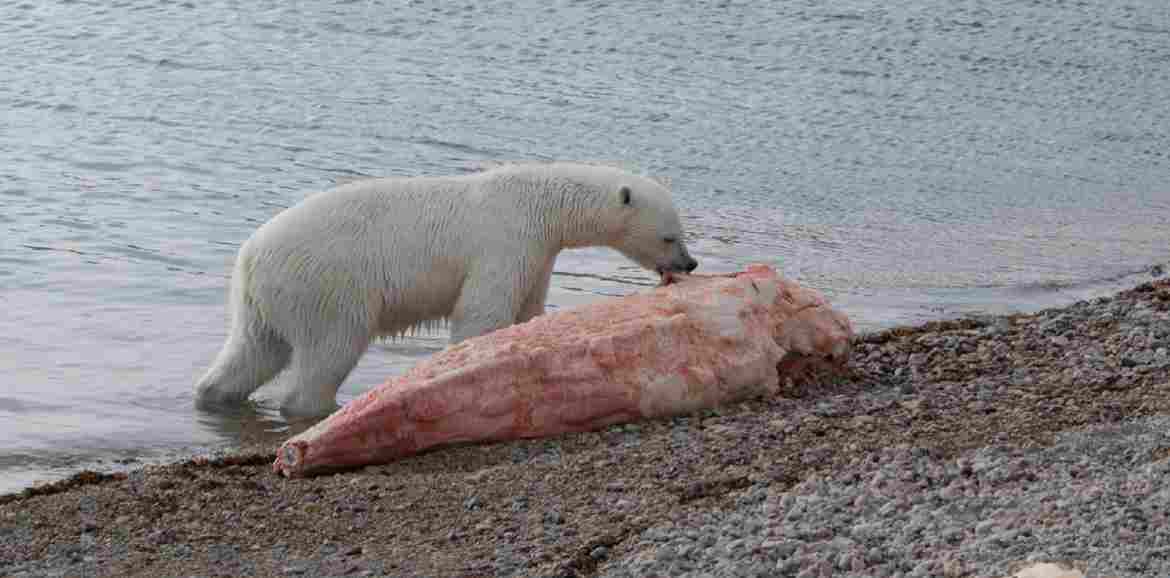
Is a Bear a Producer, Consumer or Decomposer?
While bears are not producers or decomposers, they are undoubtedly consumers.
Bears are consumers because they rely on consuming other organisms or food materials to meet their nutritional needs. Unlike producers, such as plants, bears do not have the ability to manufacture their own food through photosynthesis. They lack chlorophyll pigmentation, which is essential for converting sunlight into energy. As a result, bears must obtain their energy by consuming other organisms, whether it be plants, fruits, nuts, or meat.
In terms of decomposition, bears do not directly contribute to the process of biodegradation. Decomposers, such as bacteria and fungi, play a crucial role in breaking down dead organic matter and recycling nutrients back into the ecosystem. They have specialized digestive systems and enzymes that allow them to break down complex organic compounds into simpler forms. Bears, on the other hand, do not possess these specialized digestive systems or enzymes required for decomposition.
While bears are known to scavenge on carrion and other organic waste, they cannot be classified as typical decomposers. Decomposers actively break down the organic matter they consume, whereas bears do not. Bears are not saprophytic or detritivorous, meaning they do not directly drive the process of biodegradation. Instead, bears play a different role in the ecosystem.
Bears are important scavengers that help to clean up the environment by consuming carrion and other materials that can be considered as organic waste. Their keen sense of smell allows them to locate and consume these food sources, which helps to remove dead animals and prevent the spread of disease. While they do not actively break down the organic matter they consume, their scavenging behavior contributes to the overall sustainability of the ecosystem.
FAQs
1. Is a Polar Bear a Consumer?
Yes, a polar bear is indeed a consumer. As discussed earlier, a consumer is an organism that feeds on other organisms to survive. In the case of a polar bear, its primary source of food is seals, which it hunts and consumes. This makes the polar bear a carnivorous consumer in the food chain.
Polar bears are considered apex predators, which means they are at the top of the food chain in their ecosystem. They are typically tertiary or quaternary consumers, depending on the specific food web they are a part of. This means that they consume organisms that are lower in the food chain, such as fish and smaller mammals, which in turn consume primary consumers like herbivorous animals.
Being a consumer is essential for the survival of polar bears. Their diet consists mainly of blubber-rich seals, which provide them with the necessary energy and nutrients to thrive in their harsh Arctic environment. Without consuming other organisms, polar bears would not be able to meet their nutritional needs and would struggle to survive.
2. What Type of Consumer is a Polar Bear?
A polar bear is an apex predator, making it a tertiary or quaternary consumer in the food chain. As discussed earlier, a consumer is an organism that feeds on other organisms to survive. In the case of a polar bear, its primary source of food is seals, which it hunts and consumes. This makes the polar bear a carnivorous consumer in the food chain.
Being an apex predator means that the polar bear is at the top of the food chain in its ecosystem. It preys on organisms that are lower in the food chain, such as fish and smaller mammals, which in turn consume primary consumers like herbivorous animals. This positioning as a tertiary or quaternary consumer highlights the polar bear’s role in maintaining the balance of the ecosystem.
The polar bear’s diet consists mainly of blubber-rich seals, which provide them with the necessary energy and nutrients to thrive in their harsh Arctic environment. Without consuming other organisms, polar bears would not be able to meet their nutritional needs and would struggle to survive. Their status as consumers is essential for their survival.
3. Is a Black Bear a Primary Consumer?
While a black bear may occasionally act as a primary consumer, it is not a typical one. As discussed earlier, a primary consumer is an organism that directly feeds on producers, such as plants or algae. While black bears do consume plant material, such as berries and nuts, they also have a varied diet that includes insects, fish, and even small mammals. This makes them more of an omnivorous consumer rather than a strict primary consumer.
Black bears play an important role in their ecosystem as seed dispersers. When they consume berries and other plant material, they inadvertently spread the seeds through their scat, helping to regenerate plant populations. However, their diet is not solely reliant on plant material, which is why they cannot be classified as a primary consumer in the traditional sense.
4. Is a Black Bear a Tertiary Consumer?
A black bear is occasionally a tertiary consumer, particularly when it hunts and preys on secondary consumers like foxes. However, this behavior is relatively rare as black bears primarily rely on berries, nuts, and other plant food sources for their sustenance.
As discussed earlier, a tertiary consumer is an organism that feeds on secondary consumers, which in turn feed on primary consumers. While black bears do have the capability to consume secondary consumers like foxes, their diet primarily consists of plant material. They are known to forage for berries, nuts, and other vegetation, making them more of an omnivorous consumer rather than a strict tertiary consumer.
Black bears play a crucial role in their ecosystem as seed dispersers. When they consume berries and other plant material, they inadvertently spread the seeds through their scat, aiding in the regeneration of plant populations. This behavior further emphasizes their role as primary consumers, as they directly consume plant material and contribute to the dispersal of seeds.
While black bears may occasionally exhibit tertiary consumer behavior by preying on secondary consumers, this behavior is not their primary mode of feeding. Their preference for plant food sources and their role as seed dispersers align them more closely with primary consumers. Therefore, it is more accurate to classify black bears as omnivorous consumers with the ability to occasionally act as tertiary consumers.
5. Is a Bear a Consumer Yes or No?
Yes, a bear is a consumer. Bears primarily rely on plant food sources, such as berries and nuts, which they supplement with animal matter, making them omnivorous consumers. While they may occasionally exhibit tertiary consumer behavior by preying on secondary consumers like foxes, their preference for plant material aligns them more closely with primary consumers. Bears play a crucial role in seed dispersal, further emphasizing their role as consumers.
6. Is a Bear a Consumer or Producer?
When considering whether a bear is a consumer or producer, it is important to review the previous discussions. As mentioned earlier, bears primarily rely on plant food sources. They consume berries, nuts, and other plant materials, which aligns them more closely with primary consumers. However, bears also supplement their diet with animal matter, exhibiting tertiary consumer behavior when preying on secondary consumers like foxes.
While bears do not fit the traditional definition of a producer, they play a crucial role in seed dispersal. As they consume plant material, they inadvertently spread seeds through their feces, aiding in the reproduction and growth of plants. This indirect contribution to the ecosystem highlights their role as consumers with a significant impact on the environment.
7. Is a Bear a Primary Consumer?
When considering whether a bear is a primary consumer, it is important to review the previous discussions. As mentioned earlier, bears primarily rely on plant food sources, such as berries, nuts, and other plant materials. This aligns them more closely with the behavior of primary consumers, which are organisms that directly consume plants for energy.
While bears do consume plant material, they also supplement their diet with animal matter. This includes hunting and preying on secondary consumers like foxes. This behavior of consuming other animals places bears in the category of tertiary consumers. However, it is worth noting that bears may function as primary consumers in certain situations, particularly when their diet consists mainly of plant material.
Bears play a crucial role in the ecosystem as seed dispersers. As they consume plant material, they inadvertently spread seeds through their feces. This aids in the reproduction and growth of plants, highlighting their indirect contribution as consumers with a significant impact on the environment.
8. Is a Bear a Carnivore?
No, a bear is not a strict carnivore, although it can exhibit predatory behavior. Bears are actually opportunistic omnivores, meaning they have a varied diet that includes both plant and animal matter. As discussed earlier, bears primarily rely on plant food sources such as berries, nuts, and other plant materials. This aligns them more closely with the behavior of primary consumers, which are organisms that directly consume plants for energy.
However, bears also supplement their diet with animal matter. They are known to hunt and prey on secondary consumers like foxes, which places them in the category of tertiary consumers. This behavior of consuming other animals highlights their predatory nature.
It is important to note that the classification of bears as omnivores does not mean they consume equal amounts of plant and animal matter. Their diet can vary depending on factors such as food availability and seasonal changes. In certain situations, bears may consume more animal matter, while in others, they may rely more heavily on plant material.
9. Is a Bear a Herbivore?
No, a bear is not a strict herbivore. While bears may consume plant matter as part of their diet, they are classified as opportunistic omnivores. This means that they have a varied diet that includes both plant and animal matter.
As discussed earlier, bears primarily rely on plant food sources such as berries, nuts, and other plant materials. This aligns them more closely with the behavior of primary consumers, which are organisms that directly consume plants for energy. However, bears also supplement their diet with animal matter. They are known to hunt and prey on secondary consumers like foxes, which places them in the category of tertiary consumers.
The classification of bears as omnivores highlights their ability to adapt to different food sources. Their diet can vary depending on factors such as food availability and seasonal changes. In certain situations, bears may consume more animal matter, while in others, they may rely more heavily on plant material. This versatility in their feeding behavior makes it challenging to categorize them strictly as herbivores.
10. What Kind of Consumer is a Grizzly Bear?
Grizzly bears can be classified as tertiary or quaternary consumers, although their classification can be challenging due to their versatile feeding behavior.
As discussed earlier, grizzly bears are opportunistic omnivores, meaning they have a varied diet that includes both plant and animal matter. They primarily rely on plant food sources such as berries, nuts, and other plant materials, which aligns them more closely with the behavior of primary consumers. However, grizzly bears also supplement their diet with animal matter, making them secondary consumers as well.
In certain situations, grizzly bears may also consume animals that are higher up in the food chain, such as fish or carrion. This places them in the category of tertiary consumers. Additionally, grizzly bears have been known to scavenge on the remains of other animals, including those that are already dead. This scavenging behavior further highlights their role as quaternary consumers.
The classification of grizzly bears as both tertiary and quaternary consumers showcases their ability to adapt to different food sources and their position within the food chain. Their diet can vary depending on factors such as food availability and seasonal changes. This versatility in their feeding behavior makes it difficult to categorize them strictly as one type of consumer.
11. Is a Bear a Tertiary Consumer?
Yes, in many cases, a bear can be classified as a tertiary consumer. As discussed earlier, bears have a versatile feeding behavior that allows them to consume a variety of food sources. While bears primarily rely on plant food sources, such as berries and nuts, they also supplement their diet with animal matter.
In terms of the food chain, bears typically occupy the position of a secondary consumer. They consume herbivores, such as fish or small mammals, which places them one level above the primary consumers. However, in certain situations, bears can also consume animals that are higher up in the food chain, such as larger mammals or carrion. This behavior of consuming animals higher up in the food chain classifies bears as tertiary consumers.
It’s important to note that the classification of bears as tertiary consumers may vary depending on their specific diet and feeding habits. Bears have the ability to adapt to different food sources based on factors like food availability and seasonal changes. This adaptability allows them to occupy different positions within the food chain, making it challenging to categorize them strictly as one type of consumer.
12. Is a Bear an Omnivore?
Yes, in general, a bear is considered an omnivore. As discussed in previous sections, bears have a versatile diet that includes both plant and animal matter. They have the ability to consume a wide range of food sources, making them well-adapted to various environments.
Bears primarily rely on plant food sources, such as berries, nuts, and vegetation. These plant-based foods provide them with essential nutrients and energy. However, bears are not limited to a vegetarian diet. They also supplement their diet with animal matter, including fish, small mammals, and carrion.
The classification of bears as omnivores is based on their ability to consume both plant and animal material. This dietary flexibility allows bears to adapt to different food sources based on availability and seasonal changes. It also enables them to occupy different positions within the food chain, depending on the specific ecosystem they inhabit.
13. Can a Bear Be a Secondary Consumer?
Yes, a bear can be a secondary consumer if it feeds solely on primary consumers like rabbits. As discussed earlier, bears have a versatile diet that includes both plant and animal matter. While they are primarily considered omnivores, there are instances where bears may exhibit secondary consumer behavior.
In certain geographic locations and during specific periods, bears may rely heavily on consuming primary consumers such as rabbits. This can occur when there is an abundance of prey and limited access to plant-based food sources. During these times, bears may temporarily shift their diet to primarily consist of these primary consumers, making them secondary consumers in the food chain.
However, it’s important to note that this behavior is often geographically limited and temporary. Bears are adaptable creatures and their diet can vary based on availability and seasonal changes. They have the ability to switch between different food sources, including both plant and animal matter, depending on their environment.
14. Is a Bear a Quaternary Consumer?
Yes, some bears, such as polar bears and grizzly bears, can be considered quaternary consumers due to their prominent predatory behavior. As discussed earlier, bears have a versatile diet that includes both plant and animal matter. While they are primarily considered omnivores, there are instances where bears exhibit higher trophic levels in the food chain.
In certain ecosystems, polar bears and grizzly bears have been observed preying on other large predators, such as seals and other marine mammals. By consuming these animals, bears occupy a quaternary consumer role in the food chain. This behavior highlights the adaptability and opportunistic nature of bears when it comes to their diet.
It is important to note that not all bears are quaternary consumers. The classification of a bear as a quaternary consumer depends on its specific diet and the availability of prey in its environment. Bears have the ability to switch between different trophic levels, including primary, secondary, and tertiary, based on the availability of food sources.
15. What Type of Consumer is a Bear in the Food Chain?
In the food chain, bears can be classified as both tertiary and quaternary consumers, depending on their diet and the availability of prey in their environment. As discussed earlier, bears are primarily omnivores, meaning they consume both plant and animal matter. This versatile diet allows them to occupy different trophic levels in the food chain.
In their role as tertiary consumers, bears feed on secondary consumers, such as smaller mammals and fish. They play an important role in regulating the population of these species and maintaining the balance of the ecosystem. However, bears may also temporarily act as primary or secondary consumers when their diet consists mainly of plant matter or smaller prey.
In certain ecosystems, bears can occupy the quaternary consumer role. This occurs when they prey on other large predators, such as seals or other mammals. By consuming animals at higher trophic levels, bears demonstrate their adaptability and opportunistic nature when it comes to finding food sources.
16. Why Are Bears Consumers?
Bears are consumers because they must feed on other organisms, whether they are autotrophs (plants) or heterotrophs (animals). As discussed earlier, bears have a versatile diet that includes both plant and animal matter, making them omnivores. This dietary flexibility allows them to occupy different trophic levels in the food chain.
In their role as consumers, bears play a crucial role in maintaining the balance of ecosystems. They act as tertiary consumers when they feed on smaller mammals and fish, regulating their populations and preventing overpopulation. Additionally, bears may temporarily act as primary or secondary consumers when their diet consists mainly of plant matter or smaller prey.
Bears’ ability to adapt their diet to the available food sources showcases their opportunistic nature. In certain ecosystems, bears can even occupy the quaternary consumer role by preying on other large predators. By consuming animals at higher trophic levels, bears demonstrate their adaptability and their importance in the food chain.
17. Are Bears Primary or Secondary Consumers?
Bears are neither primary nor secondary consumers in a strict sense. However, they may temporarily act as either depending on the availability of food and other constraints.
As discussed earlier, bears have a versatile diet that includes both plant and animal matter, making them omnivores. This dietary flexibility allows them to occupy different trophic levels in the food chain. When their diet consists mainly of plant matter, such as berries or nuts, bears can be considered primary consumers. On the other hand, when they feed on smaller prey, such as fish or small mammals, they can be classified as secondary consumers.
The classification of bears as primary or secondary consumers is not fixed and can vary depending on the specific circumstances. Bears adapt their diet to the available food sources, showcasing their opportunistic nature. They are capable of switching between different trophic levels based on the scarcity of certain food items or other factors.


